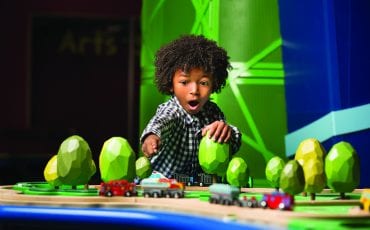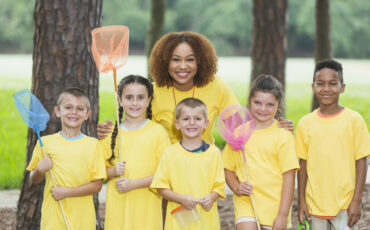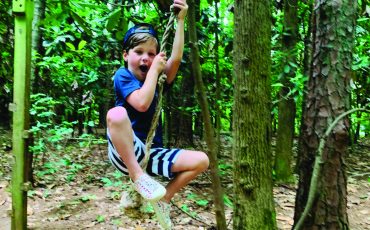Here We Go Again!
Table of Contents
Tips for a Safe and Healthy School Year: Reading, writing and math aren’t the only things that children need to help them prepare for another new school year. Children’s Healthcare of Atlanta offers these health and safety tips to help your kids get a great new start for the 2012-2013 session.
Playground:
Accidents are one of the leading causes of injury to children in elementary school. Each year, in the United States, more than 200,000 children receive emergency department care for injuries that occurred on playground equipment. Approximately 1 out of every 2 playground accidents occurs on public playgrounds, including school facilities, as opposed to backyard play equipment.
Adults should actively supervise children on playgrounds at all times. The ground should be covered 12 inches deep with shredded rubber, hardwood fiber mulch or fine sand, extending at least six feet in all directions around the equipment. Even with proper surfacing, teachers and playground monitors need to keep kids in sight and in reach on the playground. Simply being in the same place as the children isn’t necessarily supervising — kids on a playground need an adult’s undivided attention. For outdoor play, children’s clothing and outerwear should be free of drawstrings and should fit snugly to minimize the risk of getting stuck in a piece of equipment. Do not allow kids to wear helmets, necklaces, purses or scarves on the playground or engage in any pushing, shoving or crowding around playground equipment.
 Backpacks:
Backpacks:
Help your child avoid lower back pain and injury this school year — follow these simple backpack safety tips. When fully loaded, your child’s backpack should weigh less than 15 percent of his body weight. To help your child know what this weight feels like, use your bathroom scale to measure the right backpack load. Buy a backpack with two wide, padded straps that go over the shoulders — and make sure your child uses both straps at all times. Choose a backpack with a padded waist or chest belt. This distributes weight more evenly across the body. Multiple compartments also help distribute the weight.
Immunizations: 
Vaccinations are important to help protect your child from common infections. If a child is not vaccinated and is exposed to a disease germ, the child's body may not be strong enough to fight the disease. Before vaccines, many children died from diseases that vaccines now prevent, such as whooping cough, measles, and polio. Those same germs exist today, but babies are now protected by vaccines, so we do not see these diseases as often. So be sure to make — and keep — those appointments during your child's early years and even in the teen years.
Sleep:
For many children and teens, summer vacation is synonymous with staying up late and sleeping in. Returning to an early morning sleep schedule can be challenging, but it is vital to the health and successful school performance of America's youth. The National Sleep Foundation (NSF) is calling on parents and students to start adjusting their sleep schedules now, in order to be well-rested and alert for the start of the school year. According to the National Sleep Foundation's 2004 and 2006 Sleep in America polls, children and teens overall do not get enough sleep. School-aged children get an average of 1.5 hours less than the recommended 10 to 11 hours of sleep per night on school nights, and only 20 percent of adolescents get the recommended 9 hours of sleep per night on school nights. In fact, nearly half of all adolescents sleep less than eight hours on school nights.
 Soak in summer's last days with early mornings rather than late nights. Emphasize activity and bright light in the morning: go outside and take a walk or play with friends, don't sit indoors or in front of the television. Maintain a regular bedtime — keeping the same sleep schedule makes it easier to fall asleep at night and wake up in the morning.
Soak in summer's last days with early mornings rather than late nights. Emphasize activity and bright light in the morning: go outside and take a walk or play with friends, don't sit indoors or in front of the television. Maintain a regular bedtime — keeping the same sleep schedule makes it easier to fall asleep at night and wake up in the morning.
Establish a sleep routine — avoid exercising or doing anything too intellectually stimulating in the last couple of hours before going to bed.
Germs:
Although they are small and tiny exposure to germs can be a huge problem as children go back to school. Germs are found all over the world, in all kinds of places. There are four major types of germs: bacteria, viruses, fungi, and protozoa. Addressing the spread of germs in schools is essential to the health of our youth, our schools, and our nation. Nearly 22 million school days are lost annually due to the common cold alone. Tell your children to wash their hands for as long as it takes them to sing their ABCs, or “Row, Row, Row Your Boat” or the “Happy Birthday” song.” Use an antibacterial soap with warm water for best results.
Concussions:
Back to school also means back to sports for many kids. Because a child's brain is still developing, a head injury can be more serious than you think. A concussion can happen anytime, anywhere—on the field, on the playground, at home or at school. Your child does not have to lose consciousness (pass out) to have a concussion. There are many signs associated with a concussion and your child may not show any symptoms until a few days after the head injury. Your child may have a headache after the head injury.
Children's Healthcare of Atlanta, one of the leading pediatric healthcare systems in the country, is pleased to offer back to school tips for parents and their children. For more tips in each of these categories and many others, please visit www.choa.org/healthandsafetytips.








